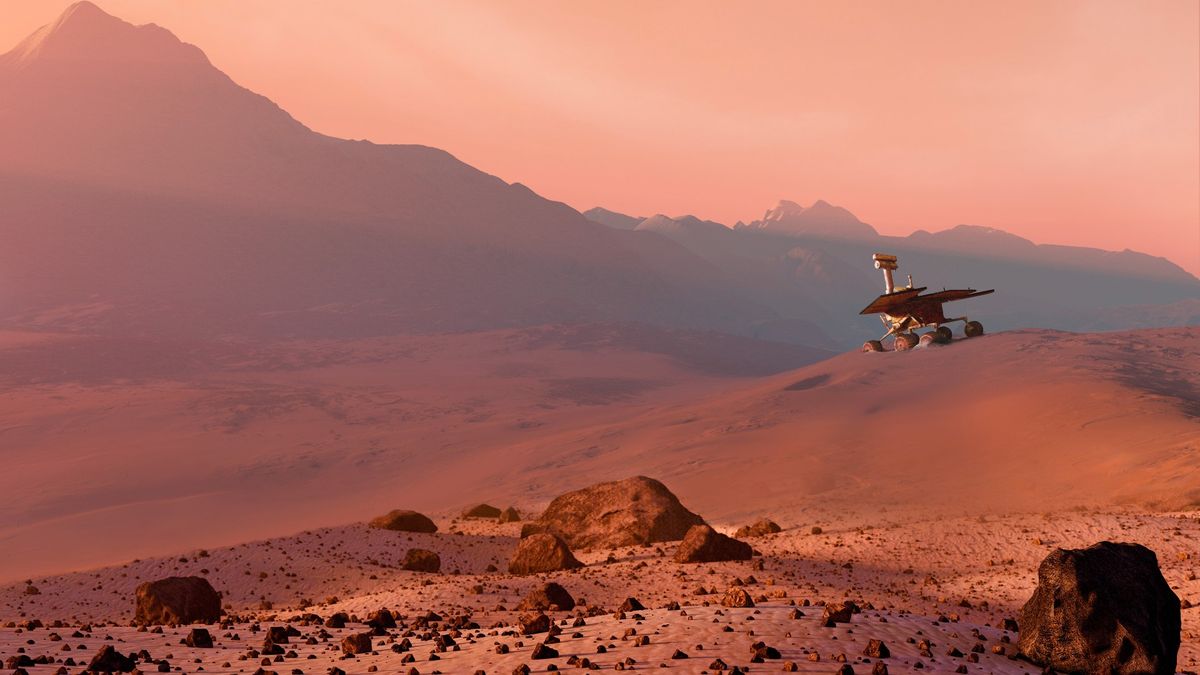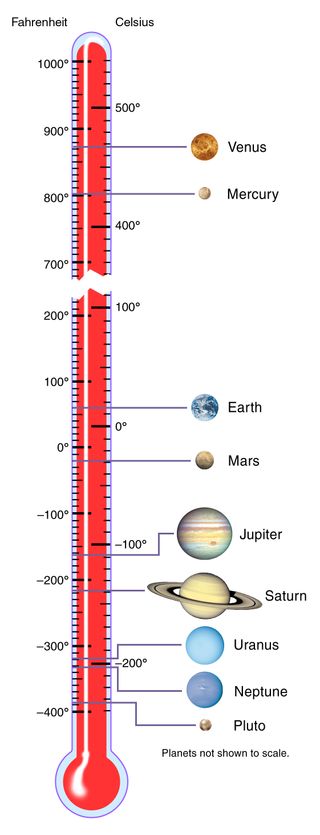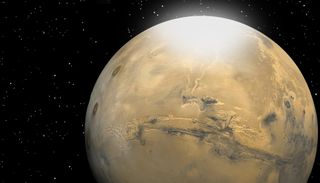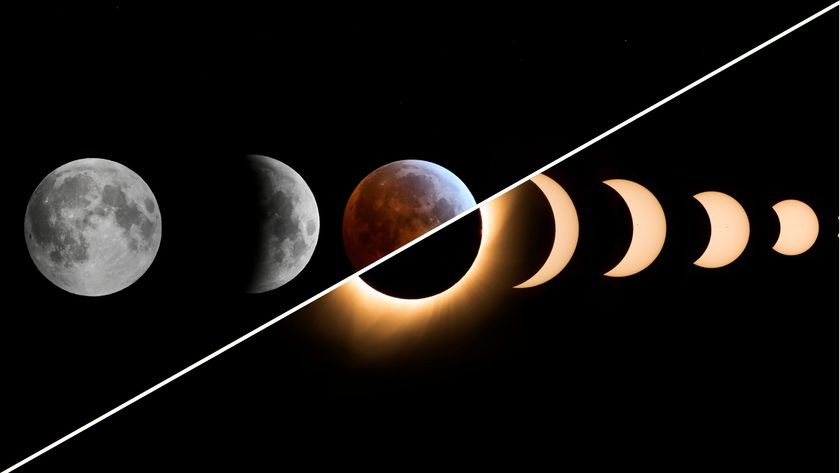What is the temperature on Mars?
The temperature on Mars is relatively low, averaging about minus 80 degrees Fahrenheit (minus 60 degrees Celsius).

The temperature on Mars is much colder than on Earth. But then, the planet is also farther from the sun. The small, barren planet also has a thin atmosphere that is 95 percent carbon dioxide.
This combination of factors makes Mars a harsh and cold world whose temperature can drop to as low as minus 200 degrees Fahrenheit (minus 128 degrees Celsius). As a point of comparison, the lowest recorded temperature on Earth is minus 128.6 degrees F (minus 88 degrees C) in Antarctica according to Arizona State University.
Meanwhile, the highest temperature on Mars is 70 degrees F (21 degrees C), significantly below the highest temperature recorded on Earth, which Arizona State University places at 134 degrees F (56 degrees C) in Inyo County, California, USA.
Related: How long does it take to get to Mars?
Why Mars is so cold

Mars's atmosphere is about 100 times thinner than Earth's. Without a "thermal blanket," Mars can't retain any heat energy. On average, the temperature on Mars is about minus 80 degrees F (minus 60 degrees Celsius) according to NASA. In winter, near the poles, temperatures can get down to minus 195 degrees F (minus 125 degrees C). A summer day on Mars may get up to 70 degrees F (20 degrees C) near the equator, but at night the temperature can plummet to about minus 100 degrees F (minus 73 degrees C).
NASA's Mars Curiosity rover is giving us new insight into the environment on Mars all the time. For instance, it measured air temperatures as high as 43 degrees F (6 degrees C) in the afternoon, with temperatures climbing above freezing for a significant number of days. Meanwhile, the Perseverance rover recorded a high of 8 degrees F and a low of -112 degrees F on January 29, 2022.
"That we are seeing temperatures this warm already during the day is a surprise and very interesting," Felipe Gómez, of the Centro de Astrobiologia in Madrid, said in a statement.
Frost forms on the rocks at night, but as dawn approaches and the air gets warmer, the frost turns to vapor, and there is 100 percent humidity until it evaporates. The high humidity could help make Mars more habitable, if the water condenses to form short-term puddles in the early morning hours.
"The conditions on Mars, where the relative humidity is high and the available water vapor is approximately 100 precipitable microns, is the equivalent of the drier parts of the Atacama Desert in Chile," John Rummel, of East Carolina University, told Space.com by email.
According to Rummel, the humidity of Mars is tied to temperature fluctuations. At night, relative humidity levels can rise to 80 to 100 percent, with the air sometimes reaching atmospheric saturation. The daytime air is far drier, due to warmer temperatures.
"At present, the temperatures and atmospheric pressures on Mars are too low for liquid water to exist stably," wrote William Sheehan and Jim Bell in "Discovering Mars: A History of Observation and Exploration of the Red Planet" (University of Arizona Press, 2021).
On Earth, some forms of life are able to survive in parched regions by poaching water from the humid air. Among these, lichens dominate, surviving in arid climates without succumbing to the dry spells that frequently occur. Some lichens in super-dry areas have been found to photosynthesize at relative humidity levels as low as 70 percent. Other research has demonstrated that a form of Antarctic lichen can adapt to life under simulated Martian conditions.
"Such short-term wet periods might be long enough and warm enough to allow for Earth organisms to metabolize and even reproduce," said Rummel.

Seasons on Mars
Like Earth, Mars has four seasons because the planet tilts on its axis. "On Earth, the seasons of spring, summer, autumn and winter are all of similar length. On Mars, because of the marked eccentricity of its orbit, the seasons differ much more in length," wrote Sheehan and Bell. In the northern hemisphere, spring is the longest season at seven months. Summer and fall are both about six months long. Winter is only four months long.
During a Martian summer, the polar ice cap, composed mainly of carbon dioxide ice, shrinks and may disappear altogether. When winter comes, the ice cap grows back. There may be some liquid water trapped beneath the carbon dioxide ice sheets, scientists say.
Climate change on Mars
In the past, Mars may have been warmer and wetter, with an average global temperature of 50 degrees F (10 degrees C).
"We've learned that Mars is a dynamic planet," Michael Meyer, lead scientist for NASA's Mars exploration program, told reporters in 2011. "We've learned that it has a history where it was warm and wet at the same time that life started here on Earth."
Other research suggests that the Red Planet may have once been white, an icy wasteland with an average temperature of minus 54 degrees F (minus 48 degrees C). According to Robin Wordsworth, a researcher at Harvard, a colder scenario is more straightforward to model because Mars only gets 43 percent of the solar energy of Earth, and early Mars was lit by a younger sun believed to have been 25 percent dimmer than it is today.
"That makes it very likely early Mars was cold and icy," he said in a statement.
And the planet continues to change today. Recent research found that the planet is emerging from an ice age involving shrinking polar caps and growing glaciers at midlatitudes.
"All around the ice cap, there is evidence for a climate change from ice age to interglacial period," planetary scientist Isaac Smith told Space.com. Smith studied the shrinking ice caps while at the Southwest Research Institute in Colorado.
"Layered ice deposits at the poles of Mars record a detailed history of accumulation and erosion related to climate processes. Radar investigations measure these layers and provide evidence for climate changes such as ice advance and retreat," wrote Smith for "Science," the
American Association for the Advancement of Science journal.
Additional resources and reading
We're learning new things about Mars all the time, such as that water may have been flowing on Mars for a lot longer than initially thought. Or there's a giant impact crater that looks like a tree stump that was recently identified on the surface of Mars. Definitely worth learning more about.
Bibliography
"How Far Away is Mars?" Space.com
"World: Lowest Temperature" Arizona State University
"World: Highest Temperature" Arizona State University
"Mars Facts" NASA
"Temperatures measured at Gale Crater higher than expected" Phys.org
"Discovering Mars: A History of Observation and Exploration of the Red Planet," by William Sheehan and Jim Bell (University of Arizona Press, 2021)
"Unveiling the ancient climate of Mars" Harvard
"NASA Radar Finds Ice Age Record in Mars' Polar Cap" NASA JPL
"An ice age recorded in the polar deposits of Mars" "Science"
Join our Space Forums to keep talking space on the latest missions, night sky and more! And if you have a news tip, correction or comment, let us know at: community@space.com.
Get the Space.com Newsletter
Breaking space news, the latest updates on rocket launches, skywatching events and more!

- Nola Taylor TillmanContributing Writer












